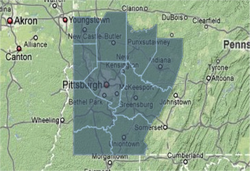Rain Barrel
There is an efficient way to take advantage of the precipitated downspout
water by using a device known as a rain barrel. Many homes around the world use
rain barrels to harvest quantities of water rather than paying for additional
water. Rain barrels can also reduce pollution to rivers and is a better
alternative water source for yards because the water is chlorine-free. During
the hot summer months, the average homeowner uses forty percent of their
household water in their yard which is approximately 4,921 liters of water. Rain barrels can save money and
conserve water for every landowner.
Rain barrels are also mandatory to have in various locations around the world. For example, in New York City, large skyscrapers have to disperse their rain water into barrels and then slowly pump the water into the sewer system. This is another advantage of a rain barrel; it eliminates water from the sewer system, which prevents a back-up or flooding.
Rain barrels even impact developing countries where there is a limited supply of drinking water or a drought. In many of these countries, people rely on the rain and collection from the barrel to survive.
It is vital for every home in America to own a rain barrel. According to the United Nations- World Water Development Report (2005), by the year 2050, at least one in four people are likely to live in a country affected by chronic or recurring shortages of freshwater.
The average rainfall amount within a year in Southwestern Pennsylvania is 98 centimeters. The downspout on a 93 square meter house can annually produce 90,850 liters of water within a year. So, when there are approximately 38.5 rainfalls in the Southwestern Pennsylvania region, the roof of an average 93 square meter house yields 2,358 liters of water per year. Therefore, if every household in Southwestern PA had a rain barrel, approximately three centimeters of rain (average of one rainfall) could save 1.5 billion liters of water in Southwestern Pennsylvania alone.
Rain barrels are also mandatory to have in various locations around the world. For example, in New York City, large skyscrapers have to disperse their rain water into barrels and then slowly pump the water into the sewer system. This is another advantage of a rain barrel; it eliminates water from the sewer system, which prevents a back-up or flooding.
Rain barrels even impact developing countries where there is a limited supply of drinking water or a drought. In many of these countries, people rely on the rain and collection from the barrel to survive.
It is vital for every home in America to own a rain barrel. According to the United Nations- World Water Development Report (2005), by the year 2050, at least one in four people are likely to live in a country affected by chronic or recurring shortages of freshwater.
The average rainfall amount within a year in Southwestern Pennsylvania is 98 centimeters. The downspout on a 93 square meter house can annually produce 90,850 liters of water within a year. So, when there are approximately 38.5 rainfalls in the Southwestern Pennsylvania region, the roof of an average 93 square meter house yields 2,358 liters of water per year. Therefore, if every household in Southwestern PA had a rain barrel, approximately three centimeters of rain (average of one rainfall) could save 1.5 billion liters of water in Southwestern Pennsylvania alone.

